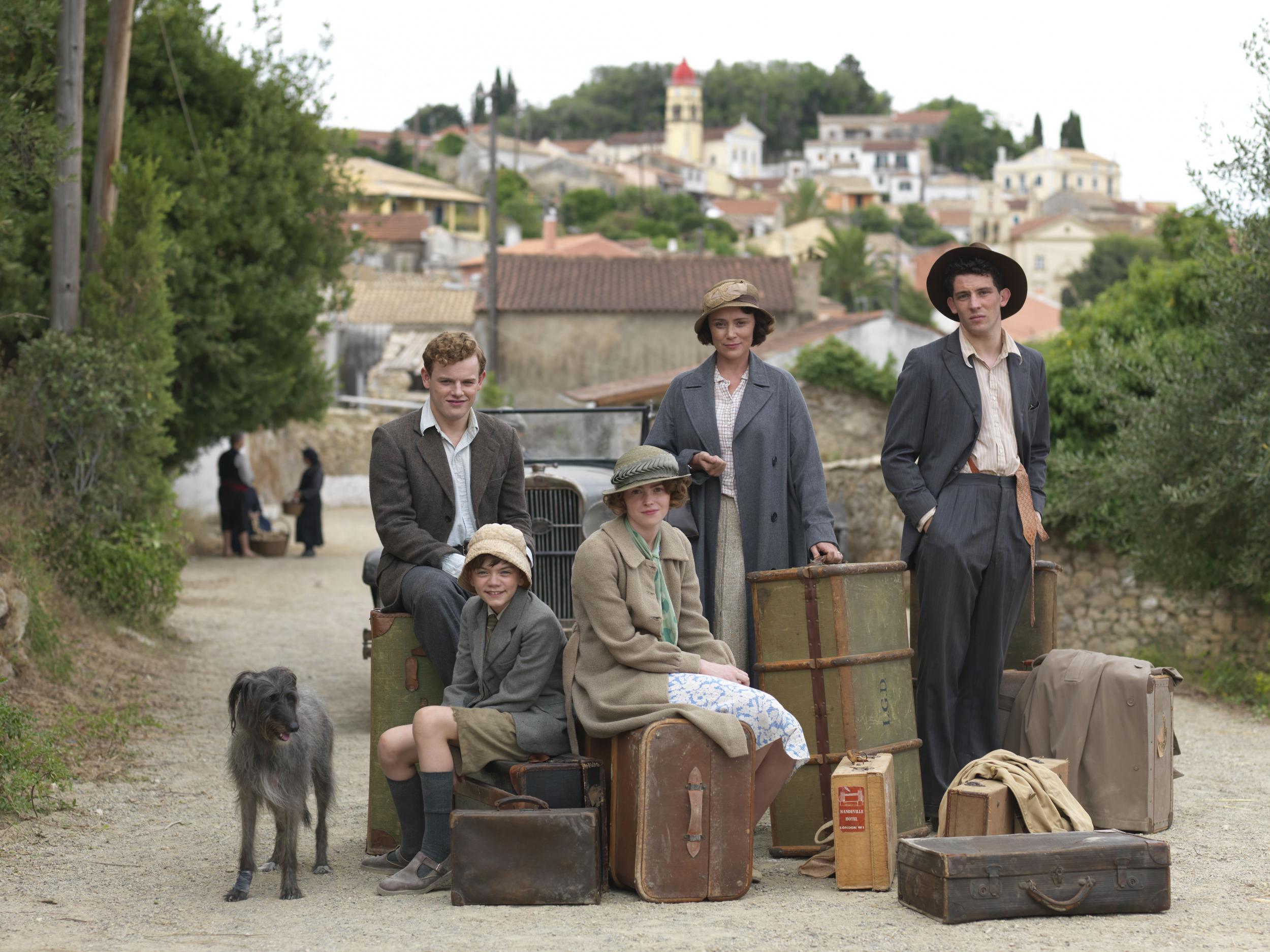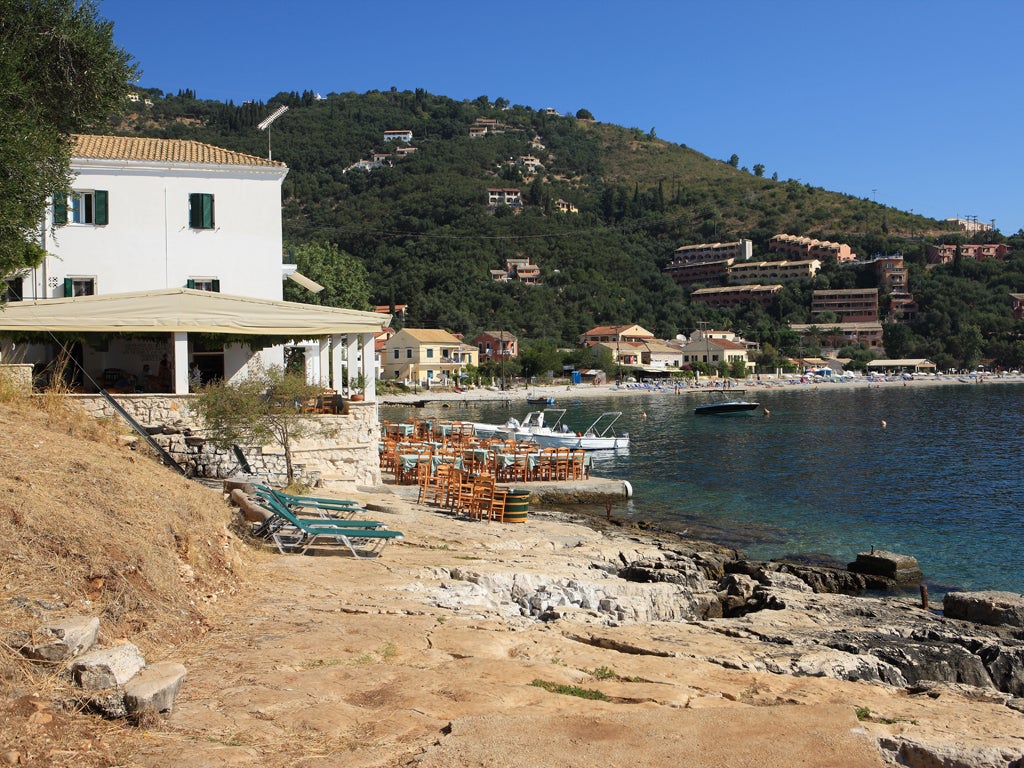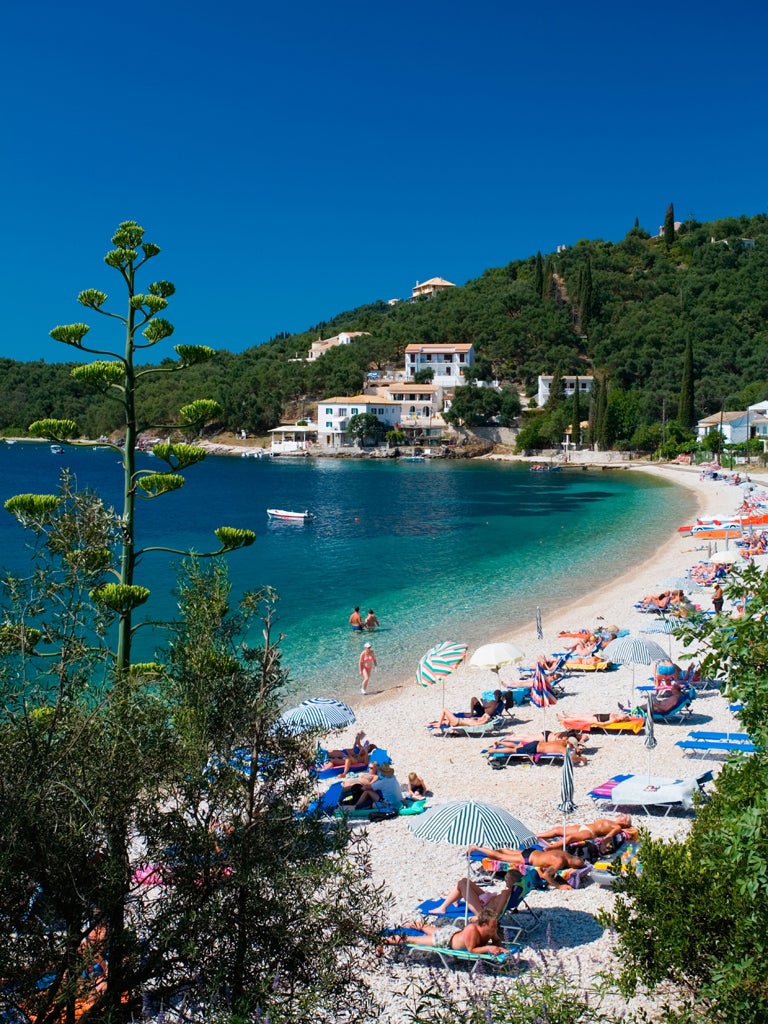The Independent's journalism is supported by our readers. When you purchase through links on our site, we may earn commission.
The Durrells in Corfu
ITV's new six-part drama tells the story of the 'My Family and Other Animals' author as he and his family adjust to their new life on the Greek island in 1935. But does a flavour of the Durrells' Corfu still exist today?

Your support helps us to tell the story
From reproductive rights to climate change to Big Tech, The Independent is on the ground when the story is developing. Whether it's investigating the financials of Elon Musk's pro-Trump PAC or producing our latest documentary, 'The A Word', which shines a light on the American women fighting for reproductive rights, we know how important it is to parse out the facts from the messaging.
At such a critical moment in US history, we need reporters on the ground. Your donation allows us to keep sending journalists to speak to both sides of the story.
The Independent is trusted by Americans across the entire political spectrum. And unlike many other quality news outlets, we choose not to lock Americans out of our reporting and analysis with paywalls. We believe quality journalism should be available to everyone, paid for by those who can afford it.
Your support makes all the difference.The Durrells, ITV’s new six-part drama based on Gerald Durrell’s classic trilogy of Corfu memoirs, captures the wild charms of this vernal Ionian isle, evoking a lost era of steamships and intrepid travel. For when the Durrell family – his widowed mother Louisa, older brothers Lawrence and Leslie and sister Margo – were disgorged at the port in 1935 with their dog, Roger, and a few belongings, Corfu was very much an impoverished backwater, its peasant society farming olive groves and honey. Indeed, having a lavatory inside your house at that time was an improbable luxury.
At the start of Gerald’s first autobiographical Corfu instalment, 1956’s My Family and Other Animals, the fatherless family is swept up in a protective embrace by a “great brown ugly angel”, Spiros Amerikanos; larger than life, loyal to a fault, this garrulous bear becomes the Durrells’ guide, translator, protector and friend (he even finds them a house with a loo).
Despite Greece’s current economic woes, you’ll find this same sense of generosity toward strangers is still alive as an old lady in traditional black dress shepherds you into her kitchen for some baklava. Three thousand years ago in The Odyssey, Homer told of how his beleaguered hero Odysseus washed up on Kerkyra (modern-day Corfu), his ills tended to by the island’s gentle folk before the final strait of his journey to nearby Ithaca. Filoxenia (hospitality) is seemingly hardwired into Corfiots’ genes.
Safely housed, the Durrells slipped effortlessly into the simple rhythm of Corfiot life: “Gradually the magic of the island settled over us as gently and clingingly as pollen”, wrote Gerald. The five idyllic years spent here, before the outbreak of the Second World War forced the Durrells to return to England, prompted him to say: “My childhood in Corfu shaped my life. If I had the craft of Merlin, I would give every child the gift of my childhood.”

But can you still find elements of My Family and Other Animals on the island today, or are his narrations simply nostalgia-tinted embellishments of a lost youth? Unlike Gerald’s first glimpse of Corfu, yours will not be the Old Town with its “green shutters folded, like the wings of a thousand moths, the bay smouldering butterfly-blue”, but rather an ugly airport and a forgettable ride through the suburbs. And instead of a coastline studded by the endless hoplite spears of cypress trees, much of the eye-line where the Durrells lived has been replaced by over-development.
However, head north to Archaravi, a seemingly forgettable town facing nearby Albania, to find a remnant of the family’s Corfu. Venture to the end of the beach and you’ll find the “Lake of Lillies”, otherwise known as Antiniotissa where the Durrells once picnicked and dozed while Gerald and his mentor, Theodore Stephanides hunted for insects.
In My Family and Other Animals, the family first encamps at “The Strawberry Villa” in the suburb of Perama (find it just above the main road between Perama and Benitses, 4km south of Corfu Town). This wasn’t entirely true, but a literary device to keep all of the family under one roof in the story. Lawrence (Larry in the book) actually came ahead and settled in a fisherman’s house 30km north of Corfu town in the village of Kalami. Lapped by peacock-blue water, this little cove bookended by wooded hills, is enchanting even today. Novelist, Lawrence and his painter wife Nancy lived at The White House, a sugar-cube affair built over the water, and where today you’ll find a decent taverna and rooms to rent.
A mile’s walk south along the coastal path, just before Agni village, is the waterside shrine of St Arsenius, where Lawrence, Nancy and their bohemian friends, swam naked as nereids; Lawrence dropping cherries into the crystalline water “clear down to two fathoms on the sandy floors where they loom like drops of blood”, as his wife dived down like an otter, surfacing with them in her lips. You can still bask on the same sun-bleached rocks, though unless you get here early you’re likely to have you daydream broken by the noisy arrival of a booze cruise boat.
Herein lies the double-edged sword of the Durrells’ success; much to his guilt and anger, Gerald’s My Family and Other Animals (considerably more popular than brother Lawrence’s Prospero’s Cell, and Henry Miller’s The Colossus of Marousi) helped put Corfu on the tourism map. By the 70s and 80s, great droves of British package holidaymakers were flocking here, and with them, bad behaviour and ugly architecture. On returning to Corfu in the 1980s Gerald likened the island to “the most beautiful woman in the world suffering from an acute and probably terminal case of leprosy – commonly called tourism.”

The next house the family moved to – allegedly to accommodate Larry’s endless influx of bohemian friends – was a four-storied Venetian mansion, affectionately known as the “Daffodil-Yellow house”; Villa Anemmoyani, still in private hands, can be found today down a long drive weaving through olive groves, on a hill overlooking the bay in Kontokali village. The third and grandest of the Durrells' Corfiot homes, “Snow-White villa” was back in the Perama area, in acres of olive grounds with its own Greek Orthodox chapel overlooking Lake Halikiopoulou, bordered by the chessboard fields Gerald often describes. Sadly, its existence is consigned to history.
Maybe it’s a case of not looking too literally for distinct remnants of their past but rather evoking the spirit of the Durrells’ island; pulling together a picnic of cherries, fresh bread and olives, and roaming the wooded shepherds’ trails around Barbati in the skirts of Mount Pantokrator, where Gerald loved to wander. You’ll witness the same fireflies, butterflies and lizards (but hopefully not the scorpions and trapdoor spiders), the lemon-tinged air, the endless spread of oaks, elms, olive trees and wild meadows. For despite the fact there are now blemishes in the form of resorts such as Kavos and Sidari, the island is still sufficiently wild and large enough to lose yourself completely in a landscape that the family – and their animals – called home.
The Durrells starts on ITV on Sunday at 8pm
Travel essentials
Getting there
EasyJet (0843 104 5000; easyjet.com) and Norwegian (0843 3780 888; norwegian.com/uk) fly from Gatwick to Corfu. Thomas Cook Airlines (0844 879 8880; flythomascook.com) and Thomson fly (0871 231 4787; thomson.co.uk/flight) from a range of UK airports.
Staying there
The White House, Kalami (00 30 26630 91040; thewhitehouse.gr). The villa sleeps up to eight guests and costs from €600 per week.
More information
Click here to view Greek tours and holidays, with Independent Holidays.
Join our commenting forum
Join thought-provoking conversations, follow other Independent readers and see their replies
Comments